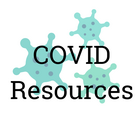
The Emergency Broadband Benefit program is a provision of the Consolidated Appropriations Act slated for $3.2 billion to reimburse internet service providers (ISPs) $10 to $50 a month for providing broadband service and up to $100 for providing devices to low-income households. NDIA recently filed comments to the Federal Communications Commission on the EBB program in order to address a number of concerns regarding outreach, eligibility and transparency. It’s important to remember that this is a temporary program and that once the money runs out, the program will end. Here is a breakdown of what we know so far:
Funding: $3.2 Billion, available until six months after end of COVID emergency period (or when the money runs out, if that’s earlier)
Administering agency: Federal Communications Commission – probably through the Universal Service Administrative Company, or USAC
1. “Emergency broadband benefit’’ means “a monthly discount for an eligible household applied to the actual amount charged to such household, which shall be no more than the standard rate for an internet service offering and associated equipment, in an amount equal to such amount charged, but not more than $50.”
“Standard rate’’ means “the monthly retail rate for the applicable tier of broadband internet access service as of December 1, 2020, excluding any taxes or other governmental fees.”
An ‘‘internet service offering’’ mean “broadband internet access service provided by such provider to a household, offered in the same manner, and on the same terms, as described in any of such provider’s offerings for broadband internet access service to such household, as on December 1, 2020.’
2. FCC payments will be direct to the ISP, not the household.
3. A household must meet one of the following criteria for eligibility:
-
-
- Be Lifeline eligible
- Eligible for an existing ISP discount broadband programs
- Have children eligible for free and reduced school lunches
- Have a household member who is a Pell Grant recipient
- Have a household member who is unemployed.
-
4. ISP participation is voluntary. Eligible households may choose among services offered by participating providers.
5. Participating providers may be:
-
-
- Already-designated USAC eligible telecommunications carriers, or
- Other broadband providers meeting the requirements established by the FCC (yet to be determined).
-
6. Participating providers must certify that eligible households are not required to pay an early termination fee (if the household agrees to enter into a service contract), and will not be subject to a mandatory waiting period.
7. A participating ISP can also receive up to $100 reimbursement for a laptop, desktop, computer or tablet provided to an eligible household. Only one device may be reimbursed per household. The providers must certify that the household is charged not less than $10 and not more than $50 for the device.
8. The FCC has 60 days from the date the legislation passes to establish EBB Program rules and processes (February 26, 2021). The EBB Program start date is uncertain at this point.
